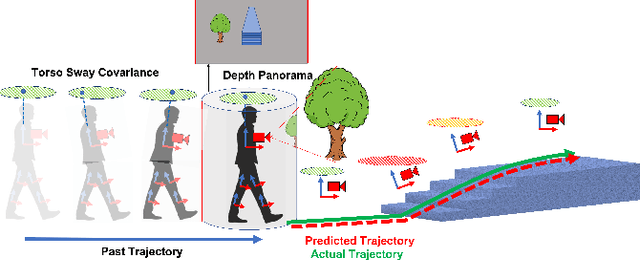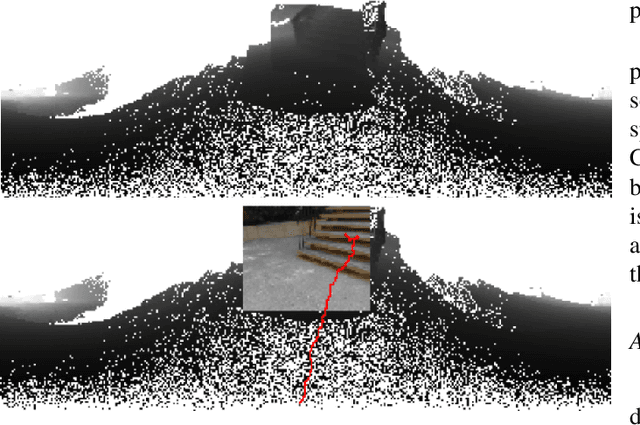Michael Raitor
Trajectory and Sway Prediction Towards Fall Prevention
Sep 23, 2022



Abstract:Falls are the leading cause of fatal and non-fatal injuries particularly for older persons. Imbalance can result from body internal causes such as illness, or external causes such as active or passive perturbation. Active perturbation is the result of applying an external force to a person, while passive perturbation results from human motion interacting with a static obstacle. This work proposes a metric that allows for the monitoring of the persons torso and its correlation to active and passive perturbations. We show that large change in the torso sway can be strongly correlated to active perturbations. We also show that by conditioning the expected path and torso sway on the past trajectory, torso motion and the surrounding scene, we can reasonably predict the future path and expected change in torso sway. This will have direct future application to fall prevention. The results demonstrated that the torso sway is strongly correlated with perturbations. And our model is able to make use of the visual cues presented in the panorama and condition the prediction accordingly.
Estimating Lower Limb Kinematics using a Reduced Wearable Sensor Count
Oct 30, 2019



Abstract:Goal: This paper presents an algorithm for accurately estimating pelvis, thigh, and shank kinematics during walking using only three wearable inertial sensors. Methods: The algorithm makes novel use of a constrained Kalman filter (CKF). The algorithm iterates through the prediction (kinematic equation), measurement (pelvis position pseudo-measurements, zero velocity update, flat-floor assumption, and covariance limiter), and constraint update (formulation of hinged knee joints and ball-and-socket hip joints). Results: Evaluation of the algorithm using a Vicon-based sensor-to-segment calibration on nine participants ($7$ men and $2$ women, weight $63.0 \pm 6.8$ kg, height $1.70 \pm 0.06$ m, age $24.6 \pm 3.9$ years old), with no known gait or lower body biomechanical abnormalities, who walked within a $4 \times 4$ m$^2$ capture area shows that it can track motion relative to the mid-pelvis origin with mean position and orientation (no bias) root-mean-square error (RMSE) of $5.21 \pm 1.3$ cm and $16.1 \pm 3.2^\circ$, respectively. The sagittal knee and hip joint angle RMSEs (no bias) were $10.0 \pm 2.9^\circ$ and $9.9 \pm 3.2^\circ$, respectively, while the corresponding correlation coefficient (CC) values were $0.87 \pm 0.08$ and $0.74 \pm 0.12$. Conclusion: The CKF-based algorithm was able to track the 3D pose of the pelvis, thigh, and shanks using only three inertial sensors worn on the pelvis and shanks. Significance: Due to the Kalman-filter-based algorithm's low computation cost and the relative convenience of using only three wearable sensors, gait parameters can be computed in real-time and remotely for long-term gait monitoring. Furthermore, the system can be used to inform real-time gait assistive devices.
 Add to Chrome
Add to Chrome Add to Firefox
Add to Firefox Add to Edge
Add to Edge